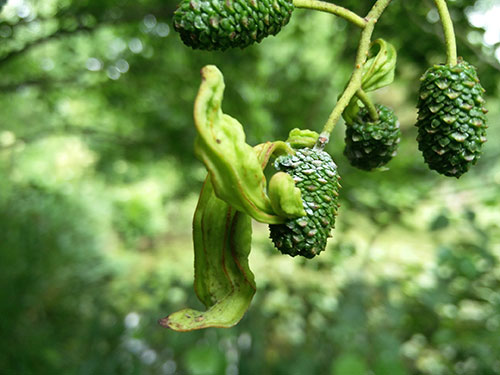


Taphrina alni at Woods Mill
Photo: Clare Blencowe
_web.jpg)
Alder Tongue gall Taphrina alni
Photo: Christian Berg (iNaturalist CC-BY)
There are over 2,000 different kinds of plant gall in the United Kingdom, but unless you know what you are looking at, you might not realise that the mysterious shape on the plant before you is actually an amazing natural process.
Plant galls are caused by a wide variety of organisms, and they can be small and conspicuous or brightly coloured science-fiction like in their appearance. The majority are the result of bacteria introduced by an insect, but Alder Tongue is a gall caused by ascomycetes fungi.
September is the perfect time to start inspecting the Alder catkins you come across for the appropriately named tongue-like protrusions. You’ll only find it on female catkins, starting as a creamy colour but later turning red or purple. Spores spread in late summer by wind, and although you’ll find the galls all year round, you have your best chance of seeing them at their most brightly coloured in September.
Like most galls, Alder Tongue doesn’t seem to bring any harm to the host plant.
Alder Tongue is under-recorded in Sussex, currently we only have eight records from four sites in Sussex (four of the records are from here at SWT HQ, Woods Mill!), so all sighting are gratefully received along with a photo either on iRecord, or to bobforeman@sussexwt.org.uk.
For more information on this and a whole ‘host’ of other plant galls, SxBRC recommends the British Plant Gall Society and Michael Chinery’s British Plant Galls: a photographic guide (available at most bookshops including summerfieldbooks.com)
Every month it is our aim to highlight a species that is “in-season” and, although not necessarily rare or difficult to identify, has been highlighted by our local recording groups as being somewhat under-recorded and for which new records would therefore be welcomed.
If you or your recording group are aware of species such as this then please contact Bob Foreman.